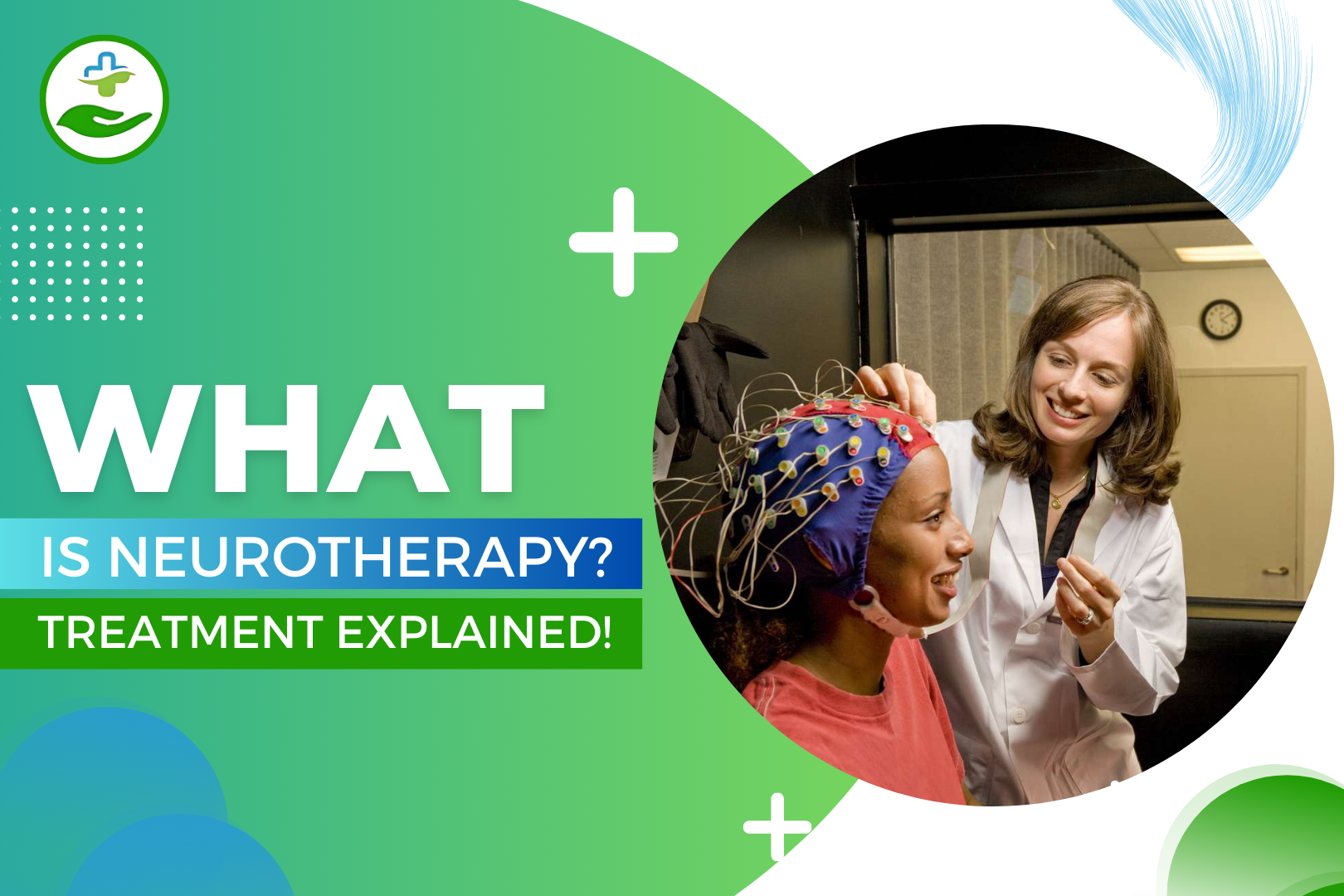What is Neurotherapy and why is it becoming a buzzword in the world of alternative healing? It’s a drug-free treatment method that focuses on stimulating specific points in the body to restore internal balance and improve overall health.
Rooted in traditional Indian practices and refined with modern understanding, neurotherapy is being recognized as a natural way to manage various chronic conditions.
In this article, we’ll dive deep into how neurotherapy works, what it can treat, and whether it’s the right choice for you.
Basic Definition of Neurotherapy
Neurotherapy, often referred to as neurofeedback therapy, is a method that helps you self-regulate brain function using real-time displays of brain activity—usually via EEG.
Why The Buzz Around Neurotherapy?
From mental health to peak performance, people are turning to brain-based solutions and neurotherapy is stealing the spotlight. Why? Because it helps without meds or surgery.
The Rise of Brain-Based Therapies
As mental health awareness grows, so does the need for safe, drug-free alternatives. Neurotherapy fills that gap with science-backed brain training that actually works.
Brainwaves & Electrical Activity
Your brain emits electrical signals—called brainwaves—that change based on your mood, alertness, or stress. Neurotherapy targets these waves.
The Role of EEG in Neurotherapy
An EEG (electroencephalogram) is used to monitor and record your brainwaves. This data guides the therapy session.
Explore our Take New Year Health Resolutions & Keep Stay Fit guide to start your journey toward a healthier lifestyle.
History & Evolution of Neurotherapy
The Early Days of Brain Research
Neurotherapy traces its roots to the 1960s when researchers began exploring brainwave patterns to treat epilepsy.
From Biofeedback To Neurofeedback
As technology advanced, biofeedback transformed into neurofeedback—a more refined and targeted form of brain training.
How Modern Neurotherapy Came To be
Today’s neurotherapy combines neuroscience, psychology, and computer tech, making it more precise than ever.
4 Types Of Neurotherapy
1. Neurofeedback Therapy
This is the most common type—using EEG feedback to reshape brain activity in real-time.
2. Biofeedback Therapy
Focuses on body processes (like heart rate or breathing), often used alongside neurofeedback.
3. QEEG Brain Mapping
A detailed brain scan that shows areas of overactivity or underactivity to personalize your treatment.
4. LORETA Neurofeedback
A 3D imaging method to target deeper brain regions for complex conditions like PTSD.

Conditions Treated By Neurotherapy
ADHD & Learning Disorders
Many parents have seen remarkable changes in kids’ focus and behavior without meds.
Anxiety, Depression, & PTSD
Neurotherapy calms overactive brain regions and strengthens emotional regulation.
Sleep Issues & Chronic Fatigue
By normalizing brainwave activity, sleep becomes deeper and more restorative.
Migraines & Chronic Pain
Regulating pain perception and stress response can reduce the frequency of migraines.
How A Neurotherapy Session Works
- Initial brain mapping (qEEG): Your journey begins with a brain map to assess which areas need training.
- Personalized brain training plans: Based on the qEEG, a custom program is developed just for you.
What Happens During a Session?
You’ll sit comfortably with sensors on your head. While you watch a movie or play a game, your brain gets feedback when it’s functioning optimally.
Benefits of Neurotherapy
- Non-invasive and drug-free: No pills, no needles. Just natural brain training.
- Long-lasting brain changes: Once your brain learns new patterns, the results often stick—like riding a bike.
- Enhancing focus, mood, and sleep: Whether you’re a student or CEO, better brain function can boost all areas of life.
Risks & Side Effects
Is Neurotherapy Safe?
Yes. It’s one of the safest brain treatments available, with no known serious risks.
Common Mild Side Effects
Some people report fatigue, mild headache, or increased emotional sensitivity after early sessions—but these usually fade quickly.
Who Can Benefit From Neurotherapy?
Children, Adults, And Seniors
From toddlers with ADHD to seniors battling memory issues—neurotherapy is for all ages.
Athletes & High Performers
Top athletes, CEOs, and artists use neurotherapy to gain a mental edge.
Neurotherapy vs. Traditional Treatments
How Does It Compare To Medications?
Unlike medications, neurotherapy doesn’t mask symptoms—it works on the root cause.
Therapy vs. Neurofeedback
Traditional talk therapy helps with insight. Neurofeedback changes the brain patterns behind the behavior.
Real Stories & Success Cases
Case study: ADHD Improvement
9-year-old Liam went from struggling in class to focusing like a champ after 20 neurofeedback sessions.
Overcoming Anxiety Through Neurotherapy
Emma, 32, battled chronic anxiety for years. After a personalized neurofeedback plan, she now reports feeling calm and in control.
How To Find a Certified Neurotherapist
Certifications And Qualifications
Look for practitioners certified by BCIA (Biofeedback Certification International Alliance).
What To Ask Before Starting
Ask about their experience, tools used, and how they track progress.
Cost And Accessibility
How Much Does Neurotherapy Cost?
Prices vary, but one session typically ranges from $75 to $200. Packages often reduce the cost.
Is It Covered By Insurance?
Sometimes. Check with your provider—especially if it’s for a diagnosed condition. alified practitioner who adheres to best practices in the field.
The Future of Neurotherapy
AI & Technology Integration
AI-driven neurofeedback is making sessions smarter and more personalized.
Expanding Global Use
More clinics worldwide are adopting this revolutionary treatment—and the results are exciting.
Conclusion
So, what is neurotherapy really? It’s more than just brain training—it’s a new frontier in health, wellness, and mental performance. With non-invasive technology and personalized protocols, neurotherapy is helping people unlock their full potential.
Whether you’re battling a mental health issue, looking to optimize performance, or just want to feel better—neurotherapy might be the game-changer you’ve been searching for.
FAQ
Q1. What is neurotherapy?
Ans- Neurotherapy is a non-invasive treatment that focuses on balancing the body’s energy flow and regulating the nervous system.
Q2. How does neurotherapy work?
Ans- It works by applying pressure to specific points, using techniques like heat and cold therapy, breathing control, and muscle manipulation to stimulate nerve function.
Q3. What conditions can neurotherapy treat?
Ans- It treats a wide range of conditions, including chronic pain, neurological disorders, digestive issues, and respiratory problems.
Q4. Is neurotherapy scientifically proven?
Ans- Research is ongoing, but current studies show promising results in its effectiveness for managing certain conditions.
Q5. Who can benefit from neurotherapy?
Ans- Anyone looking for natural, drug-free ways to manage pain, improve nerve function, and enhance overall health can benefit.
Q6. What are the main techniques used in neurotherapy?
Ans- The main techniques include pressure point therapy, heat and cold treatments, muscle manipulation, and controlled breathing.
Q7. Is neurotherapy safe?
Ans- Yes, it is generally safe, though some people may experience mild discomfort.







